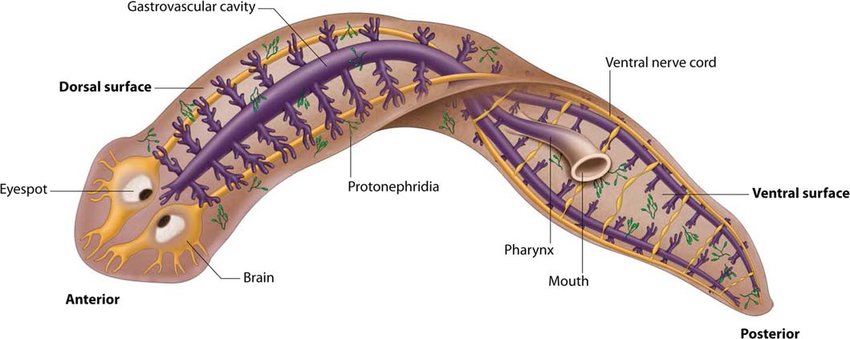The body of animals in this group is far more complexly designed than in the two other groups we have considered so far. The body is bilaterally symmetrical, meaning that the left and the right halves of the body have the same design. There are three layers of cells from which differentiated tissues can be made, which is why such animals are called triploblastic. This allows outside and inside body linings as well as some organs to be
made. There is thus some degree of tissue formation. However, there is no true internal body cavity or coelom, in which well developed organs can be accommodated. The body is flattened dorsoventrally (meaning from top to bottom), which is why these animals are called flatworms. They are either free-living or parasitic.
Some examples are free-living animals like planarians, or parasitic animals like liver flukes.

Fig – Liver fluke

Fig – Planaria

Fig – Tape worm
